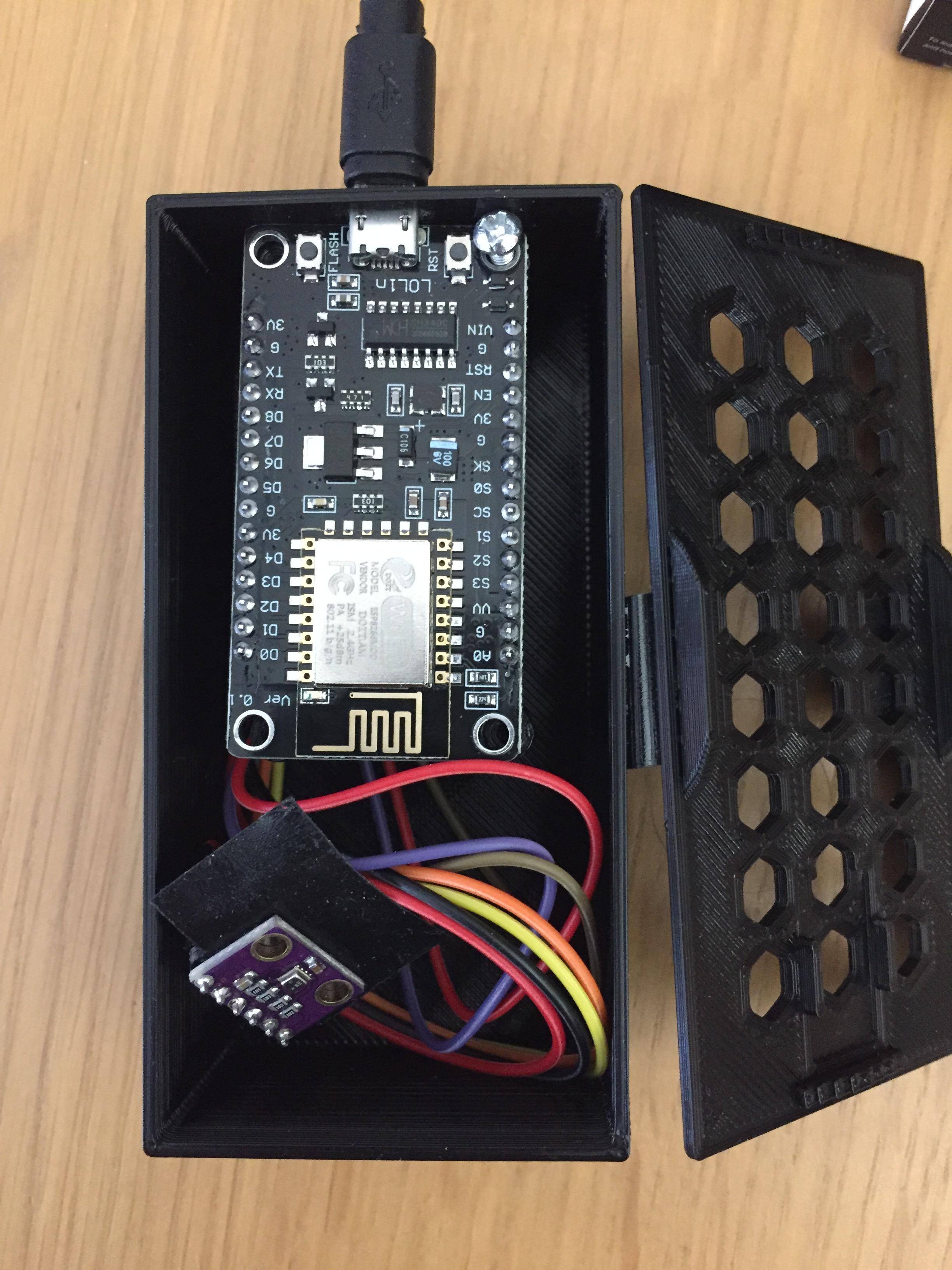I have built a little thermostat based on BMP280 temperature sensor over I2C, ESP8266 Lolin v3 and STX882 433Mhz transmitter.
I have not added additional pull-up resistors or decoupling capacitors.
Everything works fine when the components are out of the enclosure (see picture), but when I put them inside the enclosure the BMP280 readings start to 'oscillate' as shown in this picture
I am not an electrical engineer and the only thing I can think of is that there is some kind of interference between the transmitter and the BMP280 or I2C bus.
To give you and idea I am also attaching two pictures of the thermostat.


Any suggestion?


